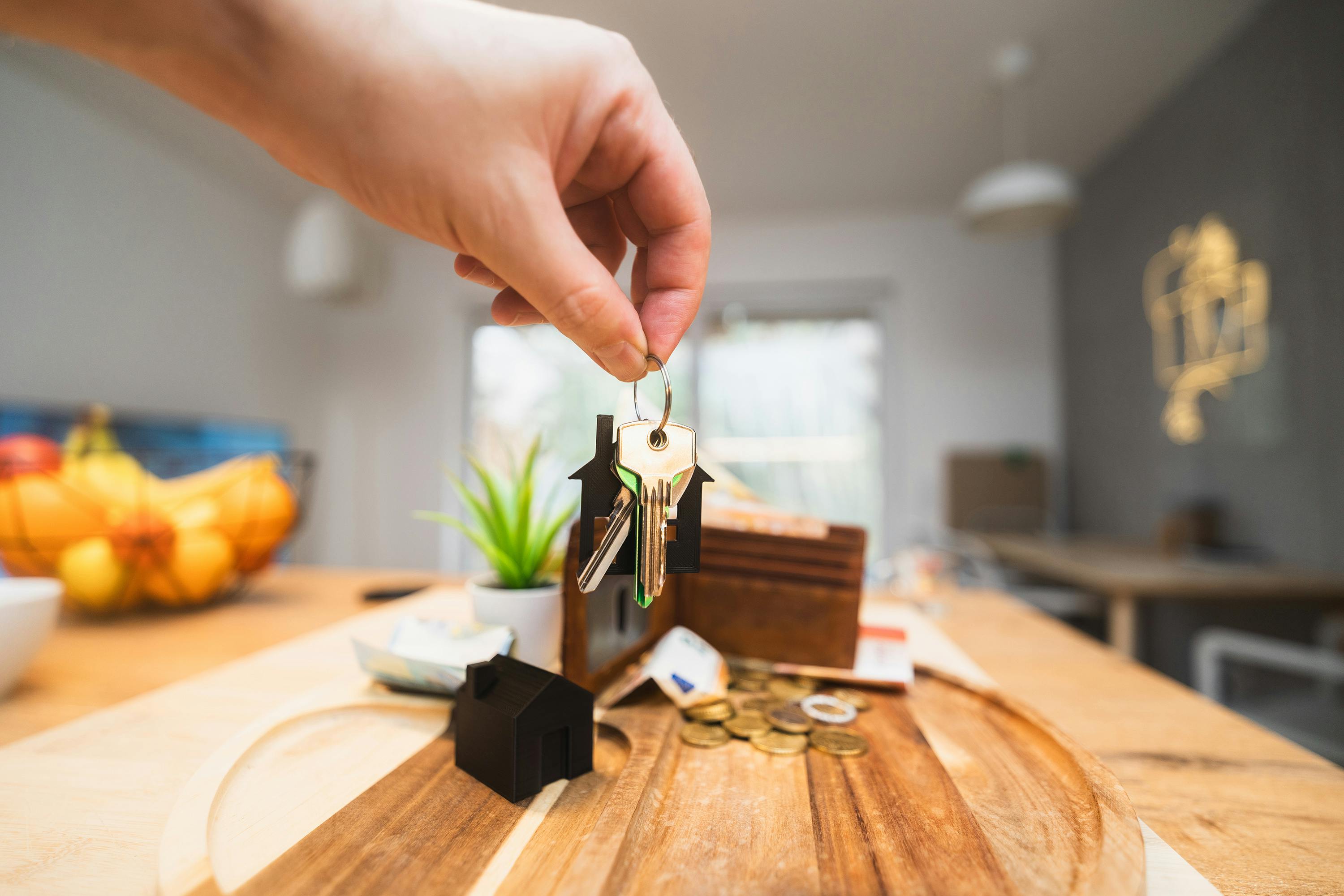January 31, 2025
Mortgage Shared Ownership Explained A Path to Homeownership
Getting on the property ladder can feel like a challenging job, especially with house prices climbing faster than ever. But what if there was a way to own your dream home without needing a massive deposit or taking on an overwhelming mortgage? That’s where shared ownership comes in; a flexible and affordable option that’s helping more people take their first steps towards homeownership.
With shared ownership, you buy a portion of a property and pay rent on the rest, making it a practical solution for those who find traditional home-buying out of reach. It’s designed to make owning a home more accessible, especially if you’re struggling to save for a full deposit or secure a large mortgage. Whether you’re a first-time buyer or looking to downsize, this option could be the key to revealing the door to your new home.
What Is Mortgage Shared Ownership?

Mortgage shared ownership lets you purchase a share of a property while renting the rest from a housing association or similar organisation. Typically, you can buy between 25% and 75% of the property’s value, with an option to increase your ownership share over time, known as "staircasing". This approach appeals to first-time buyers or those with limited savings for a deposit.
You only pay a mortgage on the share you own, making monthly repayments more affordable compared to traditional property purchases. The rented portion involves a subsidised rent, meaning lower rental costs compared to private renting. Shared ownership is often available for new-build homes and selected resale properties.
Who Can Apply?
Eligibility depends on certain criteria, with a focus on helping those unable to buy through other routes. Generally, you must earn less than £80,000 per year (£90,000 in London) and demonstrate that you can afford to cover mortgage repayments and rent. Shared ownership is commonly open to first-time buyers, previous homeowners who can’t afford another property, or renters seeking more stability.
How Does It Work?
You secure a mortgage for your ownership share while paying rent on the remaining portion. For example, if a property costs £200,000 and you purchase a 50% share worth £100,000, the mortgage covers this share. Housing associations typically charge 2.75% of the remaining value (£100,000) annually, resulting in lower rent compared to market rates.
Staircasing Explained
Staircasing refers to purchasing additional shares of the property when financially feasible. Each time you staircase, the rent decreases proportionally. For example, if you buy another 25%, your total ownership increases to 75%, reducing the rented share to 25% and its associated rent.
Keep in mind, staircasing often involves fees such as valuations, legal costs, and mortgage adjustments. Carefully plan financial decisions to assess if staircasing benefits your long-term goals.
Benefits of Shared Ownership
Lower Costs: Smaller deposit and reduced mortgage make entry more affordable.
Flexibility: Incremental ownership provides financial adaptability.
Stability: Homeownership offers long-term security compared to renting.
Important Considerations
Before committing, assess additional expenses like service charges, annual rent increases, and maintenance responsibilities. A mortgage broker experienced in shared ownership can guide you through these details. Reliable mortgage brokers provide expert guidance, helping you find suitable rates while exploring shared ownership complexities.
How Mortgage Shared Ownership Works
Mortgage shared ownership helps potential homeowners secure part-ownership of a property by combining purchasing and renting. It's ideal for first-time buyers, those with limited savings, or individuals unable to afford a full mortgage on the current housing market prices. This method balances affordability while offering a pathway toward full ownership over time.
Eligibility Criteria
Eligibility is essential when considering shared ownership. Typically, your annual household income needs to be below £80,000 (£90,000 in London). Housing associations often prioritise first-time buyers, although some exceptions exist for those who previously owned a home but now cannot afford to purchase outright. You must not own another property when applying, and you need to demonstrate that you're financially capable of covering monthly repayments, rent, and any associated fees like service charges.
Certain properties might restrict eligibility based on local authority or job-related schemes, such as key worker housing. Always check the specific criteria directly with the provider for clarity, as unique requirements might apply.
Application Process
The process generally starts with a search for shared ownership properties through housing associations or platforms offering shared ownership schemes. Once you've identified a suitable property, you submit an application demonstrating your eligibility. This step often involves proof of income, savings, and employment status.
After approval, the next stage involves arranging a mortgage for the share you're purchasing, typically between 25% and 75% of the property's market value. Seeking professional advice from a UK mortgage broker experienced in shared ownership ensures access to the best lender rates and terms. A service like Mortgage Connector simplifies connecting with brokers tailored to your needs.
Once financing is secured and contracts are exchanged, you officially own your share of the property. Monthly payments consist of mortgage repayments for your share and rental payments for the portion owned by the housing association. Guarantee you factor in potential costs such as service charges, maintenance, and future staircasing opportunities.
This structured yet flexible process equips you with a manageable route to property ownership.
Benefits Of Mortgage Shared Ownership
Mortgage shared ownership offers practical advantages, making homeownership more accessible to those struggling with traditional methods. It combines affordability with flexibility, allowing you to enter the property market without needing a large deposit or significant financial resources.
Lower Initial Costs
Entering the property market through mortgage shared ownership reduces upfront costs. Since you're buying only a percentage of the property (typically 25%-75%), the deposit required is smaller. For example, purchasing a 50% share of a £200,000 property requires a deposit based on just £100,000, not the full property value.
Affordable Monthly Payments
Monthly payments are typically lower than full ownership. These combine mortgage repayments on your purchased share and rent on the housing association's share. For example, buying a 40% share of a property valued at £180,000 may result in manageable costs compared to renting outright or buying fully.
Gradual Ownership (Staircasing)
You can increase your ownership over time by purchasing additional shares, known as "staircasing." This lowers the rent portion and eventually allows full ownership. Staircasing works well if your financial situation improves over time, giving more control over your housing costs.
Accessibility for First-Time Buyers
Shared ownership is particularly helpful for first-time buyers with limited income or savings. Income thresholds of £80,000 (£90,000 in London) guarantee the model remains targeted at those in need. If you meet these criteria, shared ownership provides a structured path into property ownership.
Long-Term Stability
Owning a share of your home offers greater stability compared to renting. Your payments are allocated towards a tangible asset, providing the security of homeownership without the pressures of full-market costs.
Eligibility Flexibility
Eligibility does not solely prioritise first-time buyers. If you previously owned a home but can no longer afford full ownership due to financial challenges, shared ownership offers a second chance. Demonstrating affordability and financial capability ensures you're eligible.
Assistance from Mortgage Brokers
Working with a mortgage broker simplifies the shared ownership journey. Expert brokers match you with a lender suited to this model. This ensures better rates and tailored advice, leveraging their expertise to find a deal aligned with your budget.
By adapting shared ownership options, first-time buyers and those re-entering the market can better handle the financial hurdles of property ownership. Tools like staircasing also broaden future opportunities, making it a more accessible and manageable path.
Potential Drawbacks Of Mortgage Shared Ownership
Limited Ownership
With shared ownership, your stake in the property ranges between 25% and 75%. This partial ownership means you won't fully benefit from rising property values unless you've purchased more shares through staircasing. Also, you won't have full control over the property, as the housing association retains a share.
Monthly Costs Combine Mortgage And Rent
Your monthly payments include both mortgage repayments and rent. Depending on the property and location, rent on the unsold share can be significant. For instance, living in high-demand areas like London might result in higher rent costs alongside your mortgage, affecting affordability.
Service Charges And Additional Fees
Aside from rent, housing associations often charge monthly service fees. These cover communal maintenance, repairs, and other administrative costs but can significantly impact your budget. If the property includes shared spaces like gardens or lifts, service charges might be higher, so understanding these charges in advance is essential.
Restrictions On Property Alterations
Shared ownership agreements usually impose limitations on property modifications. Major renovations might require approval from the housing association, which can involve lengthy processes. This can make personalising your home more challenging compared to fully-owned properties.
Resale Complications
Selling your shared ownership property isn't as straightforward as selling traditional homes. Housing associations typically have first refusal rights, meaning they can choose to find a buyer themselves. This can delay the process and limit flexibility when trying to move quickly.
Long-Term Affordability Concerns
While initial costs are lower, long-term expenses may increase. Rent on the unsold share can rise annually in line with inflation, as stated in most agreements. Coupled with increasing service charges, your affordability might decrease over time if your income doesn't grow at a similar rate.
Mortgage Limitations
Not all lenders offer shared ownership mortgages. You may need to work with specialist lenders, which reduces your options compared to traditional home-buyers.
Limited Housing Options
Shared ownership properties are often part of housing schemes, meaning they might not be available in all areas. If your desired location lacks such schemes, this could restrict your housing choices and force you to compromise on your preferred location or property type.
Exit Strategies Can Be Restrictive
If you want to exit the shared ownership scheme, selling your share or staircasing fully to 100% ownership are your main options. Both involve costs and complexities, such as valuation fees or legal expenses, making the process lengthier and often more expensive than anticipated.
By considering these drawbacks, you can evaluate whether shared ownership aligns with your financial goals and future plans.
Tips For Exploring Mortgage Shared Ownership

Buying a home through mortgage shared ownership can seem complex, but you can simplify the process by following specific strategies and knowing what to expect.
Understand Your Budget
Clarify your financial situation to calculate affordability. Include the deposit, mortgage repayments, rent, service charges, and costs like legal fees. For example, remember the deposit depends on the share you’re purchasing, not the property’s total value.
Check your monthly commitments to guarantee you can cover all payments comfortably. If your income fluctuates, focus on lower ownership shares to reduce the financial strain.
Research Housing Associations and Schemes
Identify reputable housing associations offering shared ownership properties. Guarantee they are registered providers regulated by the government. Be aware that properties under shared ownership schemes might come with restrictions on eligibility, resale, or alterations.
Check the availability of properties in your preferred locations. In regions with high demand, such as London, applying early boosts your chances.
Consult a Mortgage Broker
Contacting a UK mortgage broker experienced in shared ownership provides clarity and support. They match your income and credit profile with lenders offering suitable mortgage options. Brokers can often secure better rates than you might find independently.
Discuss your future plans with your broker, as they can guide you on staircasing options. Staircasing increases your ownership share over time and reduces your rent.
Prepare Your Application Documents
Submit accurate documents to speed up the application process. Gather proof of income, bank statements, and credit reports. Some housing associations request evidence of long-term affordability; having pre-approved mortgage terms ready strengthens your application.
Plan for Additional Costs
Recognise expenses beyond the shared ownership scheme. Budget for annual rent increases, rising service charges, home maintenance, and staircasing fees. Legal advice is also essential, especially for first-time buyers exploring new terms.
Understand how exit strategies such as selling your share work. Housing associations usually have first refusal rights, which may impact how and when you can sell.
Consider Potential Constraints
Restrictions like property customisation limits or shared decision-making with housing associations are common. Accept these compromises if prioritising affordability and partial ownership outweighs complete control.
Before moving ahead, guarantee shared ownership aligns with your long-term financial goals. Working with a trusted mortgage broker prepares you for future challenges and opportunities while optimising your shared ownership experience.
Conclusion
Mortgage shared ownership offers a practical route to homeownership, especially if you're exploring financial constraints or struggling with high property prices. By combining affordability with flexibility, it provides an opportunity to step onto the property ladder without the need for a full deposit or large mortgage.
While it comes with challenges like additional fees and restrictions, careful planning and expert advice can help you make the most of this option. Take the time to assess your financial goals and explore whether shared ownership aligns with your long-term aspirations. With the right approach, it can be a valuable stepping stone towards owning your own home.
Frequently Asked Questions
Who is eligible for shared ownership?
Eligibility typically includes earning less than £80,000 a year (£90,000 in London), being a first-time buyer or someone who can no longer afford a home, and not owning another property. Applicants must also demonstrate financial ability to cover monthly payments and associated fees.
How does staircasing work in shared ownership?
Staircasing allows you to purchase additional shares of your property over time. This reduces the rented portion and could decrease your rent. In some cases, you can eventually own the property outright by staircasing to 100%.
Can I make changes to a shared ownership property?
Modifications may require approval from the housing association, limiting your ability to personalise the property. It’s essential to understand any restrictions before proceeding with shared ownership.
Do all lenders provide shared ownership mortgages?
No, not all lenders offer shared ownership mortgages. Consulting a mortgage broker experienced in shared ownership can help you find suitable lenders with competitive rates tailored to your financial situation.
What additional costs should I consider in shared ownership?
In addition to the monthly rent and mortgage payments, buyers should anticipate service charges, maintenance fees, legal costs, and potential annual rent increases. Planning for these expenses is crucial to avoid financial strain.
What happens if I want to sell a shared ownership property?
When selling, the housing association often has the first right to buy or find a buyer. This process can delay sales compared to selling a privately owned home, so it's important to be aware of this potential complication.
Is shared ownership a good option for first-time buyers?
Yes, shared ownership is particularly beneficial for first-time buyers with limited savings or income. It provides an accessible and structured route to homeownership with lower initial costs and manageable monthly payments.
Similar articles

April 23, 2025
Established fact that a reader will be distracted by the way readable content.

April 23, 2025
Established fact that a reader will be distracted by the way readable content.

April 16, 2025
Established fact that a reader will be distracted by the way readable content.


